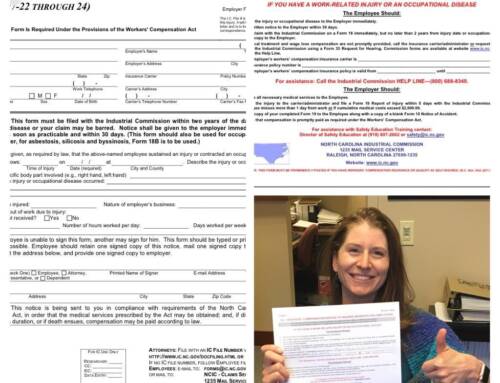Today’s post comes from guest author Kit Case from Causey Law Firm.
The Department of Labor and Industries encourages employers to offer light-duty positions to their injured workers’ – – the suggestion is written across the top of every time loss compensation order – – as early after an injury occurs as possible. The employer of an injured worker can offer shorter hours, a transitional job/job modifications or a new position entirely. The pay scale can be at any rate at or above minimum wage. In order to qualify as a valid job offer, a description of the position must be approved by a physician. Once approved, the job must be offered, in writing, to the injured worker with specific details including the work schedule, rate of pay and person supervising the work.
If an injured worker declines a valid job offer, time loss compensation will end.
If an injured worker declines a valid job offer, time loss compensation will end. If the employer offers a return-to-work position that pays less than the workers’’ time loss compensation rate, the worker will likely be eligible for partial compensation to make up the difference. This benefit, called Loss of Earning Power (LEP) compensation, is based on a comparison of the pre-injury wage less the actual wages earned through return to work and pays 80% of the difference, up to a state-wide cap on compensation or the time loss compensation rate, whichever is less.
The claim can remain open for medical treatment if the injured worker declines a valid job offer, but no further vocational assistance will be provided. However, if the injured worker is unable to return to work and vocational retraining has been approved, the employer has a brief window of only 15 days within which to offer the injured worker a valid, full-time job or the plan will commence. Once retraining has commenced, a job offer cannot be used to derail the retraining plan.
More and more employers are watching their claim costs closely; particularly those participating in the Retrospective Rating program (see earlier post about Retro Groups for more details). Early return to work saves the employer and the Department a significant portion of the cost of an injury claim and, in some cases, allows the injured worker to maintain their wage and benefits during their recovery.
You’ve Received a Job Offer – Now What?
You should receive a copy of the job description that has been approved by your physician along with the letter offering you a job. Review and keep this job description with you as you return to work, as well as any written physical restrictions from your doctor. While at work, make sure that you are only performing duties within your restrictions to avoid additional injury.
Stay in contact with your physician and notify them of any change in your symptoms right away. If you have an increase or change in symptoms but do not feel that you require medical attention, phone your doctor’s office and leave a message to advise of the activity that brought on the increase and the type of symptoms you are noticing. This will make its way into your chart and can be reviewed by your doctor to see a progression of symptoms if one should occur after you return to work, providing a basis for further restrictions on activity or job modifications.
Keep track of your pay stubs. If you are earning less in the transitional job, file an Application for LEP Compensation (link) and attach the pay stubs to document your earnings. The LEP application forms are usually filed once or twice per month and require your employer and physician to provide information, as well. Compensation is issued upon receipt of the application form so, unlike time loss compensation, you will not receive regularly-scheduled payments of LEP compensation.
DLI’s Stay-At-Work Program
The Department of Labor and Industries’ new Stay-At-Work program is a financial incentive that encourages employers to bring their injured workers’ quickly and safely back to light-duty or transitional work by reimbursing them for a portion of their costs. DLI will provide an employer of an injured worker reimbursement of 50% of the base wages paid to the injured worker for up to 66 weeks, up to $10,000.00 per claim. The Department will also pay for some of the cost of training, tools or clothing the worker will need to do the light-duty or transitional work.
In a recent update, the Department released figures showing that it has paid reimbursements to over 1,200 employers in Washington State in the amount of $1.6 million.
The purpose of the new incentive is to encourage more employers to return their injured workers’ to light-duty or transitional jobs with the doctor’s approval. This medical best practice can help the worker recover, and it also can reduce costs for the employer. The Department’s goal is to bring down costs and shorten the length of injury claims overall.
The Department provides the following video – one of three available – to outline this program:
<iframe width=”853″ height=”480″ src=”https://www.youtube.com/embed/AC6VNnJ1o3Y?rel=0” frameborder=”0″ allowfullscreen></iframe>
In a recent update, the Department released figures showing that it has paid reimbursements to over 1,200 employers in Washington State in the amount of $1.6 million. The Department release fuels the concept that the program is working and that the goal of lowing workers’ compensation claim costs will be achieved but the release does not provide any data to track the results at this time.
Photo credit: <a href=”https://www.flickr.com/photos/seattlemunicipalarchives/2701866522/”>Seattle Municipal Archives</a> / <a href=”https://foter.com”>Foter</a> / <a href=”https://creativecommons.org/licenses/by/2.0/”>CC BY</a>







